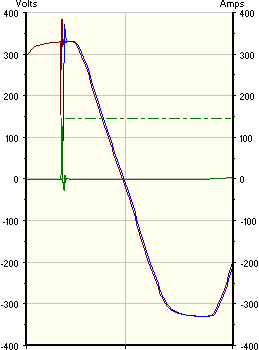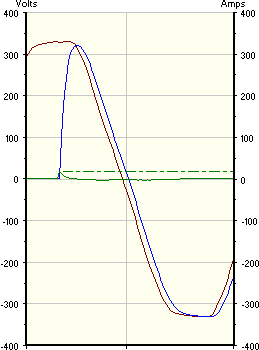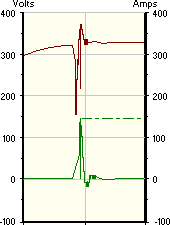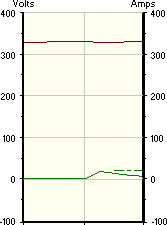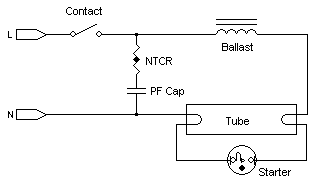|
Power Factor Correction (PFC) capacitors are highly prone to failures through being rammed directly on-line when the contactor slams shut during a motor start (or some similar occurrence). This inrush is as a result of the capacitor being discharged, thus effectively a dead short, at the time the power is applied. The only parts limiting the current through the cap is the wiring and the Effective Series Resistance (ESR) of the capacitor itself. And, the higher the quality of capacitor the worse the problem ('cos high quality caps have lower ESR). Many will have you believe this is not a problem as the energy released during such an inrush is extremely small - and there will be no argument from me on that score. The problem is the energy is not dissipated throughout the capacitor, but only through a small part of the overall plates and dielectric. The capacitor is not constructed absolutely evenly and there will be some spots where the plates are closer to one another. It is at these spots the current is highest during inrush and thus strains the dielectric within this area significantly raising the possibility of failure. Self-healing types (not exactly the best type to use for PFC) are likely to break down and puncture (the self-healing principle); Over time the capacitance will diminish thus lowering the corrective VARs. If violent "self-healing" occurs, the capacitor could self-destruct and melt (literally!). Yes, PFC caps must be fused. When it comes to motors, star-delta starters are employed to lower inrush currents. What is therefore required is a "starter" for the PFC capacitors.
Anyone who has tried to use a domestic or light industrial timer to switch a set of fluorescent lamps will tell you of pains in avoiding the contacts welding shut. This is simply from the inrush of the power factor correction capacitors within the fittings. Although there is now the move away from large capacitors as PFC in favour of smaller ones in banks, the problem gets worse as there is now more capacitors that can fail and just one failure can bring down the complete power factor correction system (which is why each and every capacitor needs to be fused rather than just the bank as a whole). The Negative Temperature Coefficient Resistor (NTCR) is one answer (there are a few makes around, my favourite is the SurgeGard range). Although typically used as rectifier protection in switch-mode power supplies, they are perfect for protecting PFC capacitors. Below are high-speed captures of switching in a 20µF capacitor used in a larger PFC bank. Note the very large impulse that occurs on the mains when switching in this single capacitor - approximately 225V peak - which arises through the resonance of the wiring inductance and capacitor. The current peaks at 140A.
When protected via the NTCR, inrush is reduced to a more respectable level of, in this case, 20A peak. The impulse is completely eliminated and only leaves a tiny notch in the waveform from the reduced inrush. Don't be concerned about the phase-shift on the second capture. This is as a direct result of the NTCR still being cold at the time of capture. It takes about 40 seconds to heat up completely and reduce the through resistance. Once hot, the phase shift is negligible and total loss through a well selected NTCR is under 1% of the VAr of the cap (some energy is needed to keep the NTCR hot!). Note: A mistake made by quite a few folk when attempting to protect switch contacts (e.g. the timer spoken of earlier) with an NTCR is they place the NTCR in line with the complete load e.g. a gas-discharge lamp with PFC capacitor. Don't do this. I have seen gas-discharge lamps (sodium-halide, etc.) take up to 3 times the running current when cold. This means the NTCR is having to withstand current well above its designed rating and shows its disgust by vaporizing!
Only protect the PFC capacitor and nothing else. Leave the load requiring power factor correction direct on line i.e. leave the inductive load (e.g. motor or lamp) directly switched. Motors are a particular problem as they can draw up to 20 times their running current for the first 10 or so cycles - more than long enough to shatter the NTCR.
© 04.08.06 |
 SOLUTIONS:
SOLUTIONS: